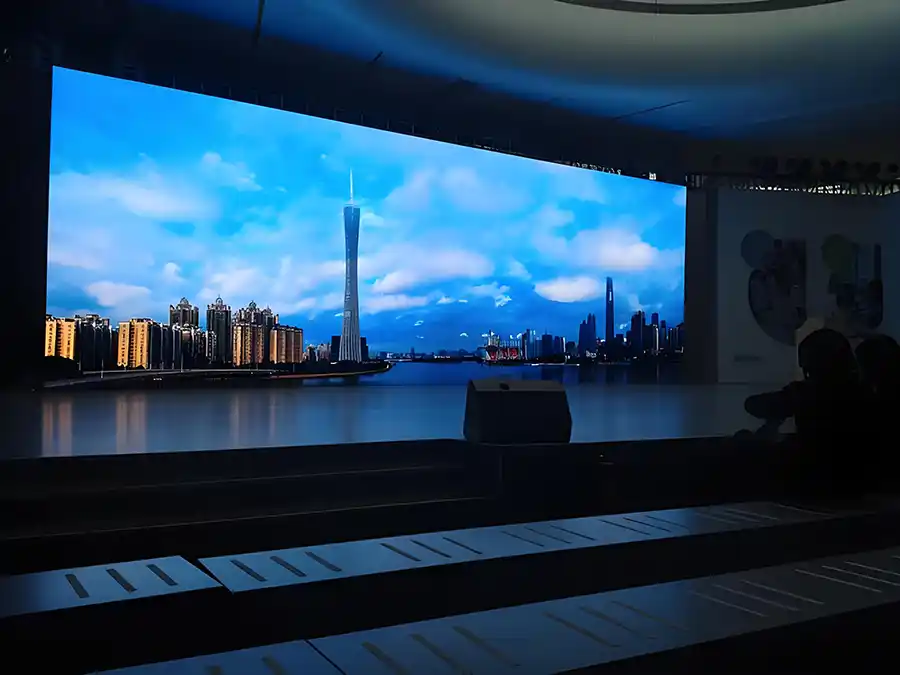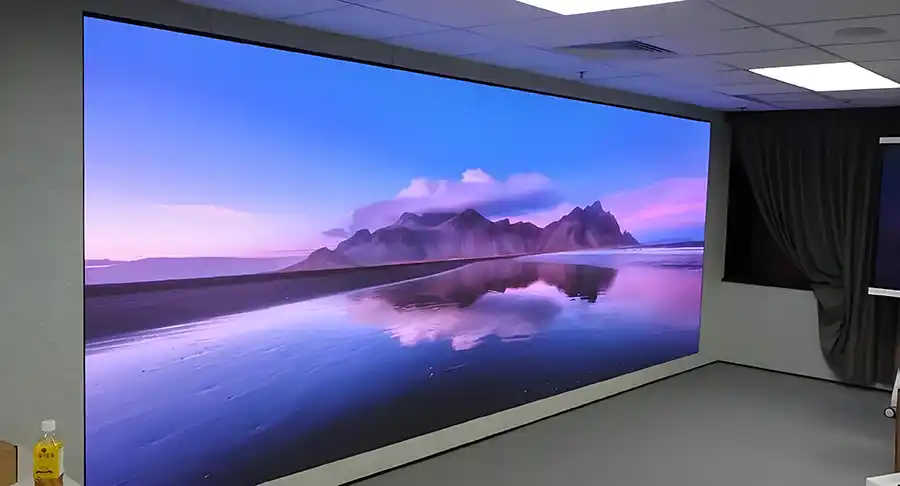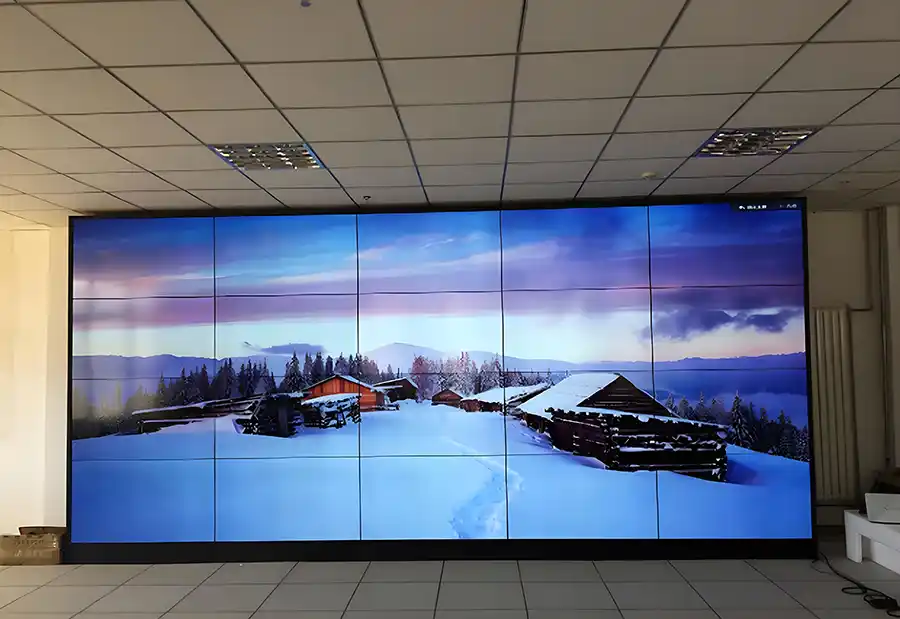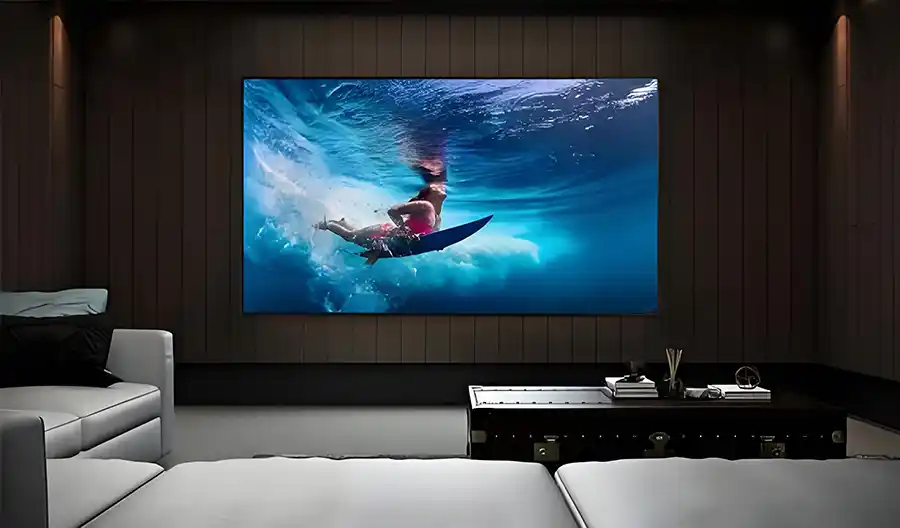LED screen backdrops have become an essential part of modern visual storytelling, event production, and advertising. These large, vibrant digital displays transform stages and venues, captivate audiences, and enable creatives to deliver dynamic content like never before.
If you’re wondering what is the size of LED screen backdrop suitable for your needs, you’re not alone. Selecting the right size involves multiple factors—from venue size and viewing distance to content resolution and budget. This comprehensive guide dives deep into how to determine the ideal LED screen backdrop size, explore different use cases, and provide practical tips for successful implementation.
An LED screen backdrop consists of multiple LED panels assembled to create a large digital canvas. These screens emit their own light, ensuring vibrant images even in bright conditions. Unlike projectors or printed backdrops, LED screens offer sharp resolution, dynamic content capability, and scalability in size and shape.
The size of your LED screen backdrop impacts visual clarity, audience engagement, and overall event experience. Too small a screen results in poor visibility, while too large can be cost-inefficient or physically impractical.

Venue Size and Layout
The backdrop must fit within the spatial constraints of your venue. Measure the width, height, and available rigging or mounting space to determine maximum possible screen dimensions.
Small rooms or conference halls: Screens usually range from 10 to 20 feet wide.
Theaters and medium-sized venues:מסכים משתרעים לרוב על פני 20 עד 50 רגל (כ-6 עד 15 מטרים).
אצטדיונים חיצוניים או זירות גדולות:מסכים יכולים לעלות על רוחב של 100 רגל.
מרחק צפייה מהקהל
המרחק שבו הקהל יושב או עומד מהמסך קובע את צפיפות הפיקסלים והגודל הפיזי הנדרשים לנראות ברורה.
צפייה מקרוב (מתחת ל-3 מטרים):דורש רוחב פיקסל קטן (למשל, 1.2 מ"מ-2 מ"מ) וגודל בינוני.
צפייה בטווח בינוני (10-50 רגל):גובה פיקסלים בינוני ומסכים פיזיים גדולים יותר.
צפייה למרחק רב (15+ מטר):מסכים גדולים וגסים יותר עם פסיעה של פיקסלים מספיקים מכיוון שפרטים עדינים אינם קריטיים באותה מידה.
דרישות סוג תוכן ורזולוציה
וידאו או טקסט בעלי פירוט רב דורשים רזולוציה גבוהה יותר (פסיעה קטנה יותר של פיקסלים) ולעתים קרובות מסכים גדולים יותר לצורך קריאות. עבור תמונות סביבתיות או רקעים מופשטים, רזולוציה וגודל נמוכים יותר עשויים להתאים.
אילוצי תקציב
גודל המסך, הרזולוציה ומורכבות ההתקנה משפיעים כולם על העלות. מציאת האיזון בין גודל לתקציב חיונית לייצור יעיל.

קונצרטים ופסטיבלי מוזיקה
תפאורות קונצרטים נוטות להיות מסיביות, ומכסות במות שלמות כדי ליצור ויזואליה עוצרת נשימה. רוחבן נע לרוב בין 12 ל-30 מטרים ומעלה, וגבהים של 4,5 עד 9 מטרים ומעלה.
המודולריות של פאנלי LED מאפשרת הרכבה מהירה וגמישות במהלך סיורים.
אירועים וכנסים עסקיים
מסכים ארגוניים הם צנועים יותר, ומתאימים לאולמות נשפים או אולמות קולנוע. מסך ברוחב 6 עד 12 מטרים ובגובה 3 עד 6 מטרים הוא נפוץ, ומספק נראות ברורה למצגות ולמיתוג.
הפקה וירטואלית של סרטים
קירות LED של הפקה וירטואלית דורשים גדלים מדויקים כדי למלא את מסגרות המצלמה ואת זוויות הטבילה. גדלים אופייניים מתחילים ברוחב של כ-30 רגל ויכולים להתעקם כדי להקיף שחקנים, ולהגיע לרוחב של 70 רגל או יותר.
קמעונאות ופרסום
חללי קמעונאות משתמשים בגדלים שונים, החל מחלונות ראווה קטנים ברוחב 1.8 מטרים ועד תפאורות רחבות ידיים של חנויות דגל בגודל 12 מטרים ומעלה.

מרחק צפייה (רגל) | גובה פיקסל (מ"מ) | רוחב מסך מומלץ (רגל) | גובה מסך מומלץ (רגל) | מקרה שימוש טיפוסי |
5 – 15 | 1.2 – 2.0 | 10 – 20 | 6 – 12 | צילומי אולפן, חדרי אירוח |
15 – 30 | 2.5 – 3.0 | 20 – 35 | 12 – 20 | מקומות בינוניים, כנסים |
30 – 50 | 3.5 – 5.0 | 35 – 50 | 20 – 28 | תיאטראות גדולים, פסטיבלים |
50+ | 6.0 – 10.0 | 50+ | 30+ | אצטדיונים, אירועים בחוץ |
מדדו בקפידה את שטח המקום שלכם.כולל גובה ורוחב תקרה הזמינים להרכבה.
קבע את מרחק הצפייה הממוצע.קחו בחשבון את הנקודות הקרובות והרחוקות ביותר שהקהל שלכם יתפוס.
בחר גובה פיקסלים בהתבסס על מרחק הצפייה וצרכי התוכן.
חשב את רוחב וגובה המסך כדי למלא את שדה הראייה של הצופים מבלי להכביד על המקום.
התייעצו עםספקי מסכי LEDעבור אפשרויות מודולריות המאפשרות שדרוגים או הרחבה עתידיים.
קחו בחשבון את התחבורה, מורכבות ההתקנה וגישה לתחזוקה.
התקנה ושיקולים טכניים
רכיבה ותמיכה:ודאו שהמקום יכול לתמוך במשקל ובגודל של רקע הלד שלכם.
כוח וקירור:קירות LED גדולים דורשים ספקי כוח ומערכות קירור יציבות.
ניהול תוכן:השתמשו בשרתי מדיה ותוכנות אמינים כדי לטפל ברזולוציה ובפורמט של התוכן שלכם.
כִּיוּל:כיול קבוע מבטיח עקביות צבע ואחידות בהירות על פני הרקע.
מסכי LED מעוקלים וגמישיםלספק חוויות צפייה סוחפות.
טכנולוגיות MicroLED ו-MiniLEDדחיפת פיקסל מתחת ל-1 מ"מ לקבלת בהירות מדהימה.
רקעים אינטראקטיביים של LEDלשלב חיישני מגע או תנועה לאינטראקציה מרתקת עם הקהל.
סטים פיזיים-וירטואליים היברידייםשלבו תפאורות LED עם אביזרים פיזיים לקבלת ריאליזם.

1. כיצד משפיע גובה הפיקסל על הגודל הנתפס של רקע ה-LED?
פס הפיקסל מגדיר את הקרבה בין הפיקסלים למסך. פס הפיקסל קטן יותר פירושו רזולוציה גבוהה יותר, כך שתוכלו לקבל מסך קטן יותר המציג תמונות מפורטות מבלי לאבד את הבהירות. לעומת זאת, פס הפיקסל גדול יותר דורש מסך פיזי גדול יותר לקבלת בהירות דומה מרחוק.
2. האם ניתן להתאים אישית תפאורות LED לצורות לא סדירות או למשטחים מעוקלים?
כן, פאנלים מודרניים של LED הם מודולריים וניתן להגדיר אותם לצורות שונות, כולל עקומות וזוויות. גמישות זו מאפשרת עיצובי במה יצירתיים וסביבות סוחפות.
3. אילו תנאי סביבה משפיעים על בחירת גודל רקע הלד?
מקומות חיצוניים עם אור שמש בהיר דורשים מסכים בעלי בהירות גבוהה יותר, מה שעשוי להוביל לפאנלים גדולים יותר או צפופים יותר של LED. מקומות פנימיים יכולים לשלוט יותר בתאורה, כך שבחירות גודל יכולות להתמקד יותר במרחק הצפייה ובגודל הקהל.
4. עד כמה ניידים מסכי רקע גדולים של LED למופעים ניידים?
פאנלים מודולריים של LED הופכים מסכים גדולים לניידים באופן מפתיע, ומאפשרים הרכבה ופירוק מהירים. עם זאת, ככל שהמסך גדול יותר, כך הלוגיסטיקה וההובלה כרוכות במורכבות רבה יותר.
5. מהו אורך החיים האופייני של רקע מסך LED?
רוב פאנלי הלד האיכותיים מחזיקים מעמד בין 50,000 ל-100,000 שעות, תלוי בשימוש ובתחזוקה. קירור נכון ותחזוקה שוטפת יכולים להאריך את תוחלת החיים.
בחירת הגודל הנכון עבור מסך LED היא החלטה קריטית המשפיעה על הצלחת האירוע או ההפקה שלכם. על ידי הבנת אילוצי המקום, מרחק הצפייה של הקהל, דרישות התוכן והגורמים הטכניים, תוכלו לבחור מסך המספק ויזואליה מדהימה וחוויה בלתי נשכחת.
רקעי מסכי LED ממשיכים להתפתח, ומציעים גמישות רבה יותר, רזולוציות גבוהות יותר ואפשרויות יצירתיות. בין אם אתם מארגנים אירוע חברה, קונצרט, הפקת סרט או תצוגה קמעונאית, בידיעה...what is the size of LED screen backdropמבטיח שההשקעה שלך תשתלם עם תמונות מרתקות וסוחפות.
אם אתם זקוקים לעזרה בהתאמת מסך ה-LED שלכם או רוצים עצה נוספת בנוגע לטכנולוגיות מתקדמות, פשוט תשאלו!
המלצות חמות
מוצרים לוהטים
קבלו הצעת מחיר בחינם באופן מיידי!
דברו עם צוות המכירות שלנו עכשיו.
אם אתה מעוניין במוצרים שלנו, אנא פנה אלינו בהקדם
צור קשר עם צוות המכירות שלנו כדי לחקור פתרונות מותאמים אישית העונים בצורה מושלמת על הצרכים העסקיים שלך ולענות על כל שאלה שיש לך.
כתובת אימייל:info@reissopto.comכתובת המפעל:בניין 6, Huike Flat Panel Display Industrial Park, מס' 1, Gongye 2nd Road, Shiyan Shilong Community, מחוז באואן, העיר שנזן, סין
וואטסאפ:+86177 4857 4559